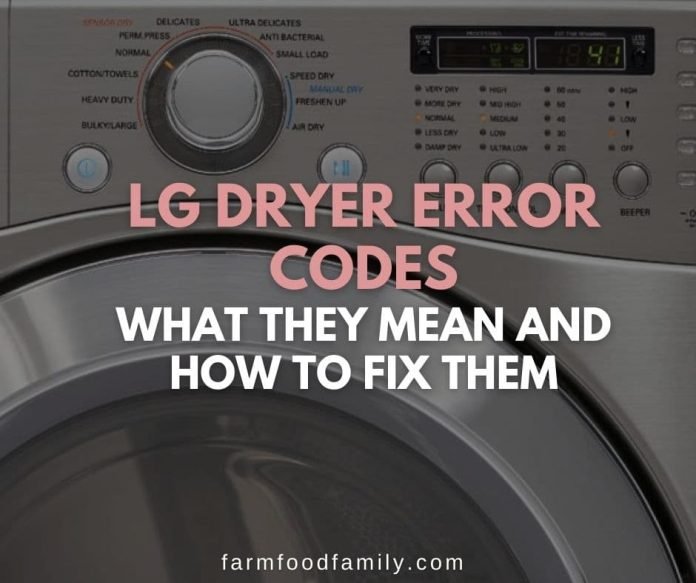
So, what exactly does the “LE” error code mean for your dryer? In simple terms, it indicates that the motor is locked. It’s as if your dryer is stuck in traffic, unable to move forward. This can be caused by a number of issues, but here’s the deal: most of them are preventable with regular maintenance and proper use. Whether it’s an overloaded drum or a blockage in the venting system, addressing these concerns early can save you time, money, and a whole lot of hassle down the line.
Understanding the Causes of the LE Error Code
Before diving into prevention, it’s crucial to grasp what might cause your LG dryer to display the infamous “LE” error. You might be wondering, “How does this happen in the first place?” Well, think of it like this: your dryer is a complex machine with many moving parts, and just like a car, it requires routine checks to keep everything running smoothly.
One of the most common culprits is *overloading*. When you cram too many clothes into the dryer, it’s like trying to fit too many people into an elevator; it just won’t work efficiently. The motor struggles to turn the drum, leading to a potential lock-up. To avoid this, always follow the manufacturer’s guidelines regarding load capacity. Remember, less is often more when it comes to drying clothes effectively.
Another usual suspect in the LE error scenario is *blockage*. Specifically, blockages in the dryer’s venting system. This is akin to a blocked nose that prevents smooth breathing. A clogged vent can cause the motor to overheat, increasing the risk of error codes appearing. Regularly checking and cleaning your dryer’s vents can help maintain steady airflow, keeping the motor cool and functional.
Finally, a less common but possible cause could be an electrical issue. Like a computer with a buggy software program, your dryer’s control board might need a reset. If you suspect this is the issue, turning the dryer off and unplugging it for a few minutes can sometimes do the trick. If not, it could be time to call in a professional.
Preventative Measures for a Trouble-Free Dryer
Now that you know what can trigger the LE error code, let’s talk prevention. When it comes to keeping your LG dryer running error-free, *maintenance is key*. Think of your dryer like a high-maintenance friend who needs regular check-ins to stay happy.
First, let’s tackle the *drum size and load capacity*. Always be mindful of how much you’re squeezing in with each cycle. This isn’t just about preventing errors; it also helps your clothes dry more evenly, extending their life span. If you’re unsure, refer to the dryer’s manual—it’s like a roadmap to using it correctly and effectively.
Next, focus on the *venting system*. Make it a habit to inspect and clean the lint filter before or after each load. This small step is like brushing your teeth daily to avoid cavities. Keeping the vents clear ensures optimal airflow, reducing the chances of overheating issues that lead to the LE error.
Lastly, it might be worthwhile to consider a professional service check every year or so. Think of it as a wellness check-up for your dryer. A technician can spot potential issues before they become significant problems, keeping your appliance running like a dream and saving you money in the long run.
Regular Maintenance and Its Long-Term Benefits
Regular maintenance might sound like a chore, but it’s like a small investment with big returns when it comes to your dryer. By being proactive, you can avoid the hassle of unexpected breakdowns and ensure your appliance operates efficiently throughout its lifespan.
Routine *inspections and cleanings* are crucial. Just as you wouldn’t drive a car with a clogged engine filter, you shouldn’t run a dryer with a blocked vent. Keeping these passages clean not only prevents the LE error but also enhances the dryer’s performance, reducing energy consumption and drying time.
Additionally, giving attention to the *motor and drum* components can significantly reduce the occurrence of error codes. Periodically check for any signs of wear or damage. A simple visual inspection can catch potential issues early, allowing for timely repairs or replacement. It’s like performing small household fixes before they turn into costly renovations.
In conclusion, while error codes may seem daunting, they are simply your dryer’s way of communicating that something needs attention. By understanding the causes and implementing regular maintenance, you can prevent the LE error code and enjoy a smoother, more efficient laundry experience. Remember, a little effort now can save a lot of frustration later.